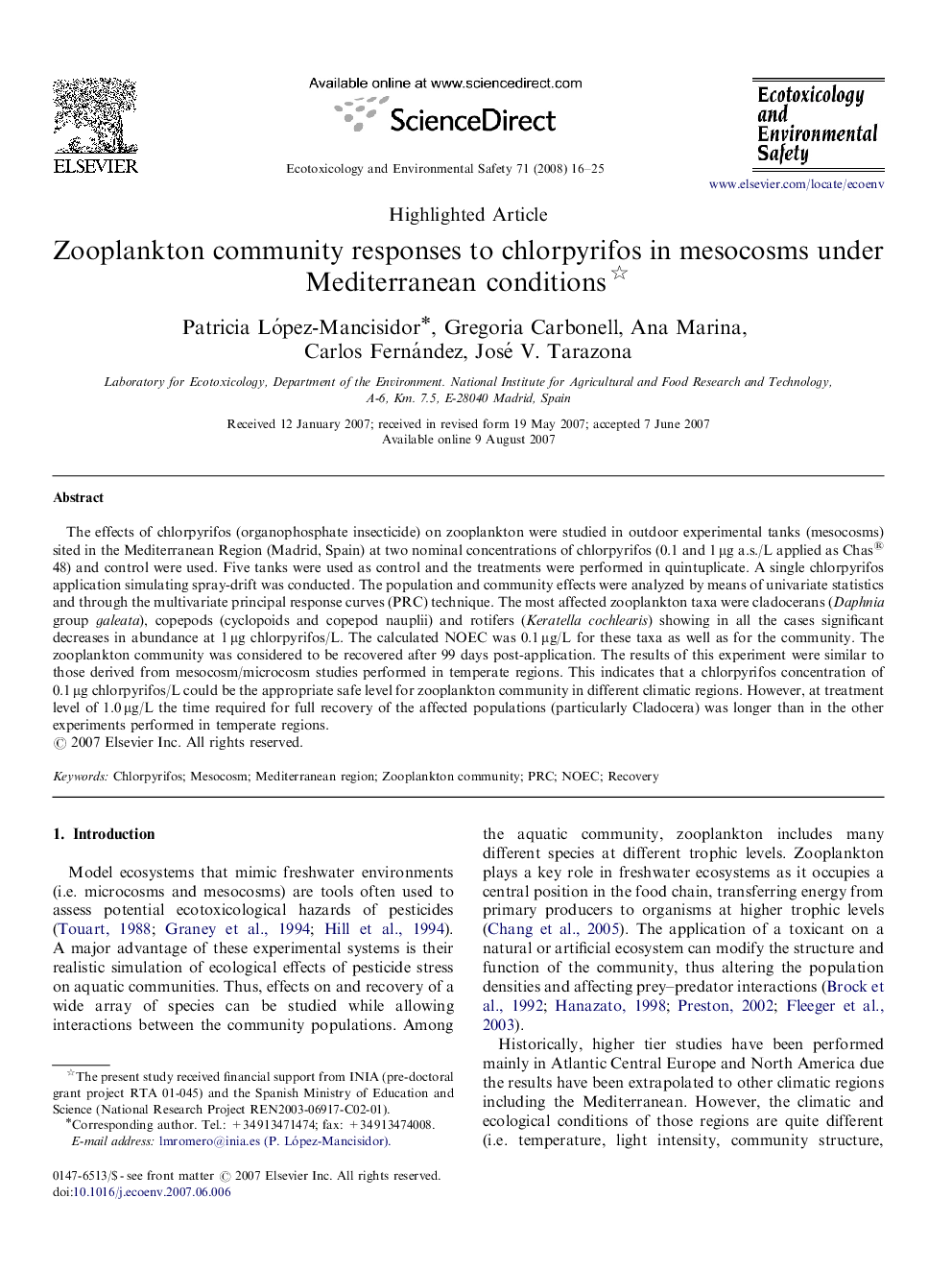| Article ID | Journal | Published Year | Pages | File Type |
|---|---|---|---|---|
| 4421851 | Ecotoxicology and Environmental Safety | 2008 | 10 Pages |
The effects of chlorpyrifos (organophosphate insecticide) on zooplankton were studied in outdoor experimental tanks (mesocosms) sited in the Mediterranean Region (Madrid, Spain) at two nominal concentrations of chlorpyrifos (0.1 and 1 μg a.s./L applied as Chas® 48) and control were used. Five tanks were used as control and the treatments were performed in quintuplicate. A single chlorpyrifos application simulating spray-drift was conducted. The population and community effects were analyzed by means of univariate statistics and through the multivariate principal response curves (PRC) technique. The most affected zooplankton taxa were cladocerans (Daphnia group galeata), copepods (cyclopoids and copepod nauplii) and rotifers (Keratella cochlearis) showing in all the cases significant decreases in abundance at 1 μg chlorpyrifos/L. The calculated NOEC was 0.1 μg/L for these taxa as well as for the community. The zooplankton community was considered to be recovered after 99 days post-application. The results of this experiment were similar to those derived from mesocosm/microcosm studies performed in temperate regions. This indicates that a chlorpyrifos concentration of 0.1 μg chlorpyrifos/L could be the appropriate safe level for zooplankton community in different climatic regions. However, at treatment level of 1.0 μg/L the time required for full recovery of the affected populations (particularly Cladocera) was longer than in the other experiments performed in temperate regions.
